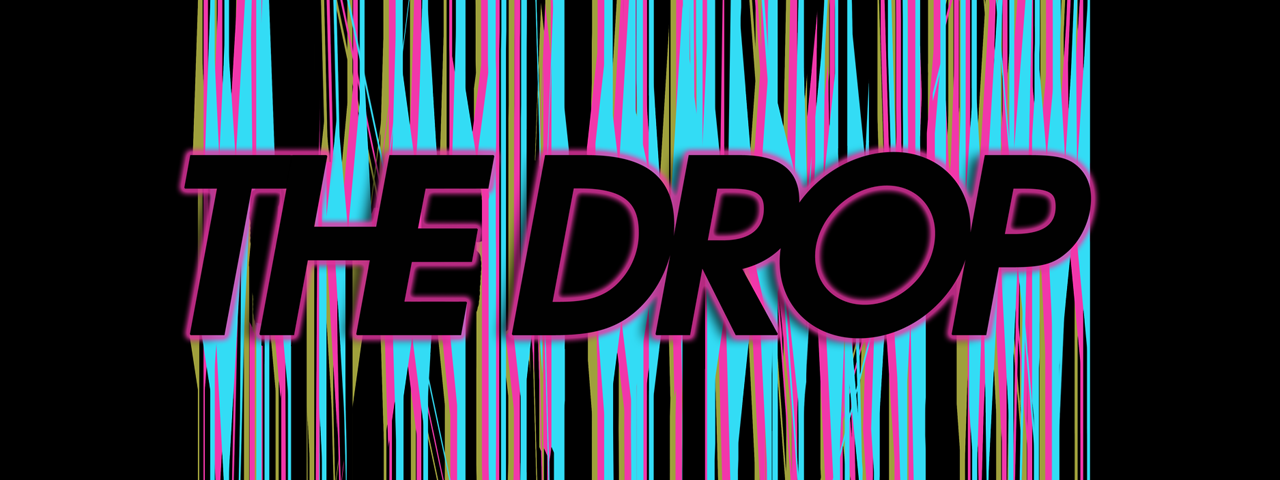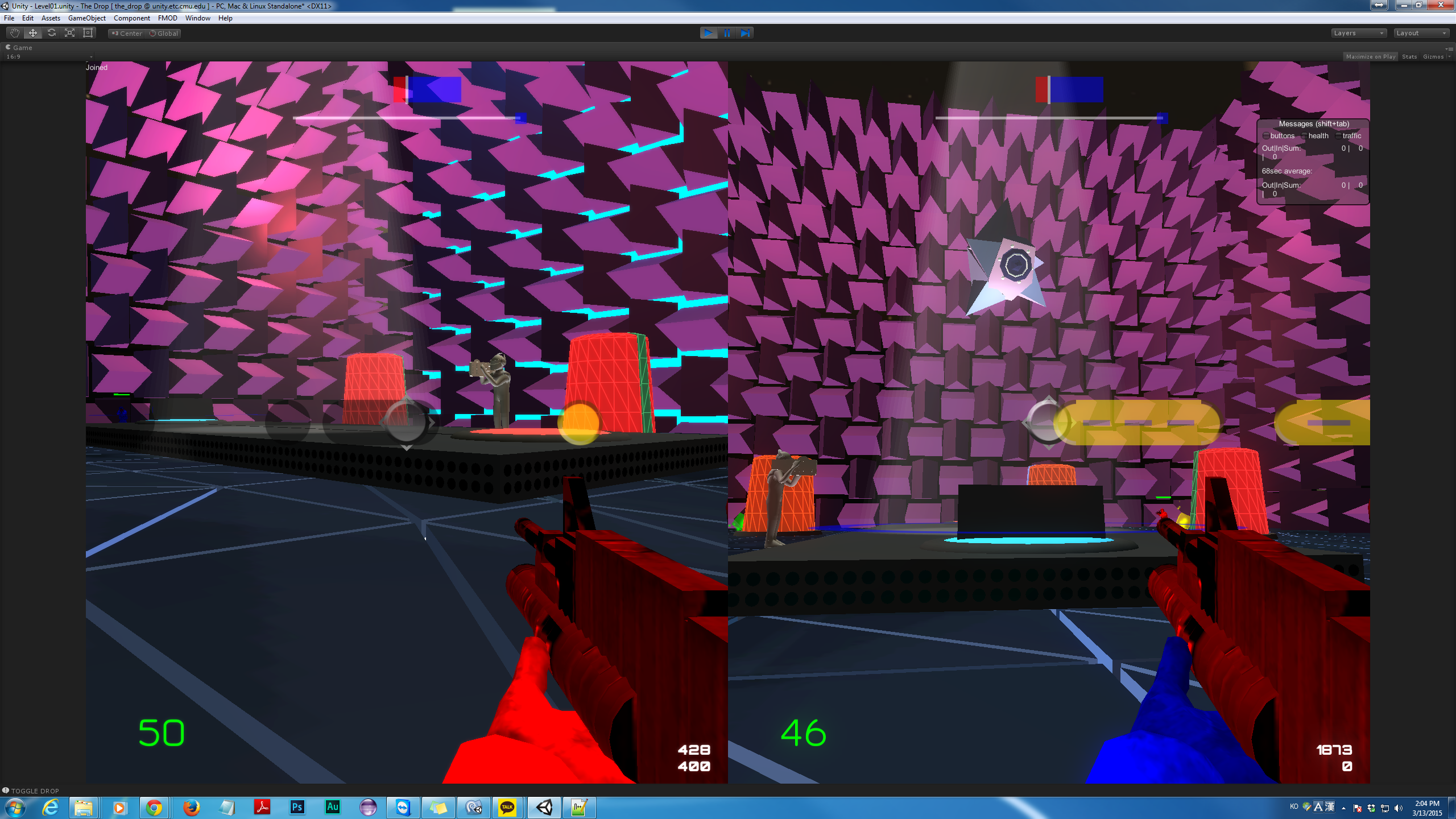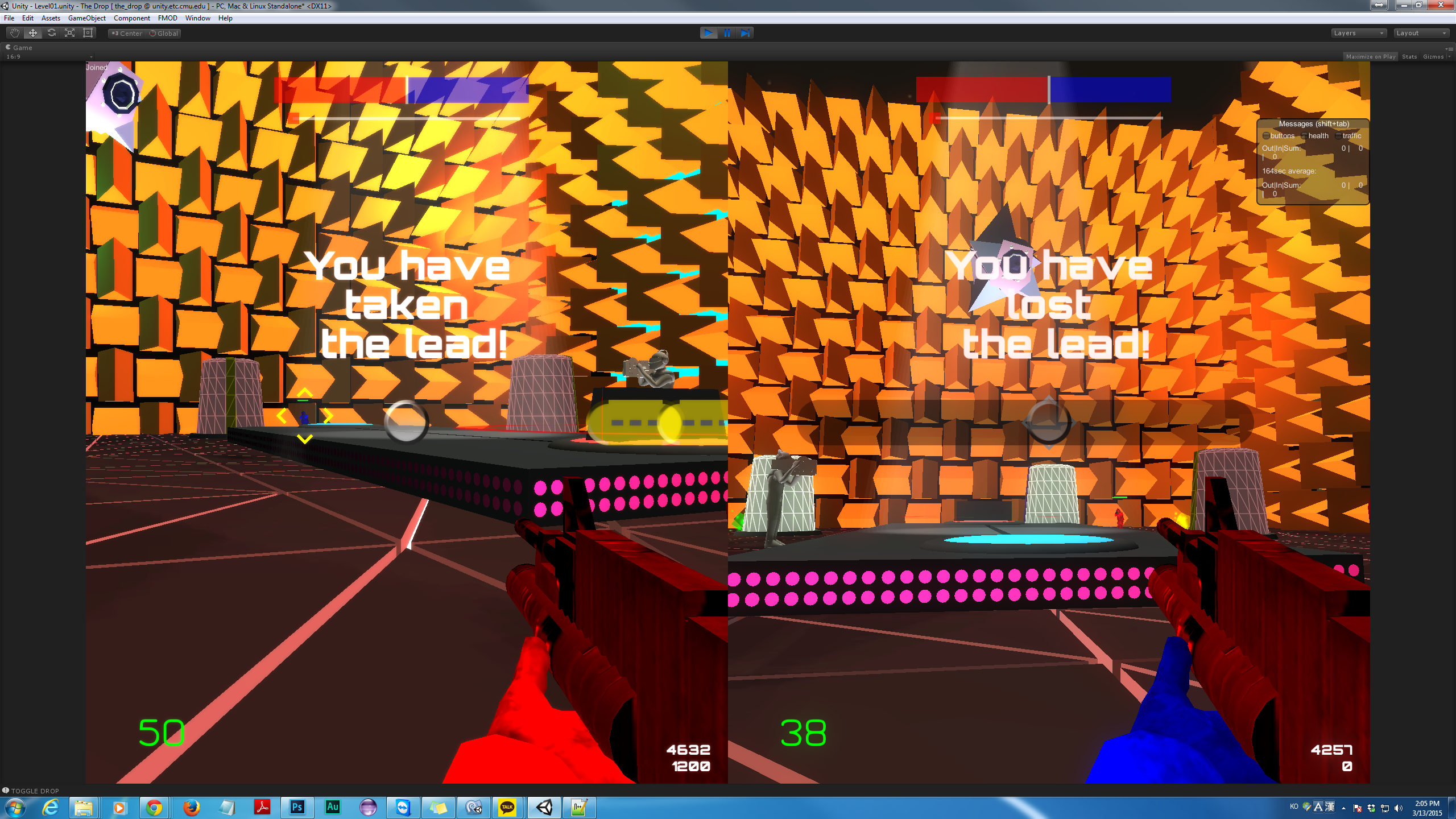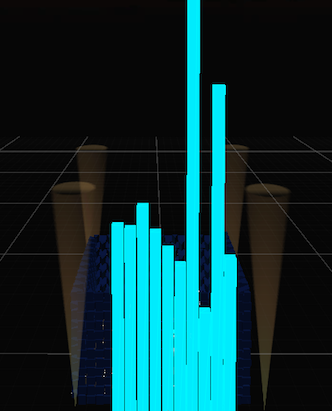Yo party people! Welcome to The Drop with our 8th Newsletter.
Our team is whole again, with three of us returning from an incredible and inspiring Game Developer’s Conference. This week, while other teams were spring breaking, The Drop was in the office, working hard on iterating our new design.
Musical Tug-of-War
The design we have been iterating on is the one we mentioned in the last newsletter featuring a musical tug-of-war between the two players. If you stand next to the crossfader, the crossfader will move closer to your side (red or blue) mixing the song so that you can hear more of your track. The ultimate goal of The Drop is to be playing your music as long as possible throughout the match. Since the drop is the most crucial part of the music and the game, it is worth twice as much to have your song being played during the drop. There is an algorithm (under the hood) that Tao has developed to reward each player the closer the crossfader is to their side over time.
Fan Count
The current vision we have for the game involves two future musical warriors battling over the crowd to try and sway them over to your side by playing your music for as long as possible. The more that you are playing your music (especially during the drop) the more the crowd will go crazy for you and get converted to become your fans. You can see the placeholder UI above indicating how well each player is doing. The more fans you get, the more the blue or red bar will fill up. Underneath is a placeholder indication of where the crossfader is at any given moment.
One of our next steps is implementing a way to add clear feedback for this in the virtual world as well, with our preffered idea being crowds displayed on video screens on the outside of the arena. The crowds will increase throughout the game and their color will indicate which player they are rooting for. Henceforth we will refer to this scoring mechanism in the game as the fan count to make it easier to refer to.
The Drop
One of the most crucial design goals of The Drop has always been creating huge contrasts between the intro/breakdown moments of the song and the climactic drop moments. There were two elements to this we were iterating on: from a visual/experience side as well as from a gameplay one. For gameplay we had experimented with it using the speaker destruction model we described before and with a few other models, but nothing quite worked without exacerbating the balance problems and confusing for the player.
Visually, we had been doing some experimentation in the past month, but hadn’t created a solid system for the drop until the past few weeks. While editing the beatmaps we can create markers that indicate when the drop begins and ends as well as having special markers for the buildup. Then we can use these markers in unity in order to create strong visual contrasts between the different sections.
One of our initial experiments include making the walls and knobs in the world start to glow and change colors according to the beat only during the drop sections as well as adding different spotlights much like you would see at a concert. Ariel has also been working on effects that will be triggered during each drop like the walls breaking into pieces and floating away revealing something behind the walls (like the crowd and/or a cool skybox etc.) JD has also created an audio analyzer (pictured above) so that we can use that as an input for various parameters to be affected during the drop. It is great to have these systems in place that we can iterate on and to already be able to see/feel the contrast throughout the song.
Another integral piece of visual feedback that we need is to reflect which song is being played. Ariel and Elizabeth have come up with some cool ideas involving pieces of the floor flipping from blue to red or red to blue each time the crossfader goes from one side to the other. The visual effect is sort of like a tidal wave moving across the floor. After putting it into the game, it wasn’t working quite as we imagined it so we are putting it on hold for a few weeks to work on other important features. In the meantime we are using a previous and simpler idea of the floor’s colors changing from red to blue depending on who is winning.
And although our character/weapon models have been finished, animated and textured for a few weeks, we unfortunately ran into a few animation issues getting them to run properly in Unity. We will hopefully be solving these issues ASAP so we can show you them in game.
Balance and Health
Balance between the two players is incredibly important and a big key to the success of the game as we finish the prototype. What we have found through extensive informal playtests, is that one player tends to get the lead and dominate for the rest of the game. However, the most exciting moments of the game are when the losing player is able to flip the game by moving the crossfader or by passing their opponent’s fan count. All along we knew we wanted to make more of these moments, but it has been difficult figuring out how to do it naturally.
The first way we addressed this issue this week is to change the way health works. Originally, when the game’s primary goal was to kill your opponent, health was all that was important so hiding from your opponent and auto-recovering your health was an important strategy. Upon switching our primary goal to moving the crossfader, we found that auto-recover was disproportionately advantageous to the winning player.
They can neutralize their opponent, then automatically recover their health while the other player waits to “respawn”. Then, the losing player has no sense of progress in their Sysyphean struggle to neutralize their opponent and move the crossfader. By removing auto-recover altogether, we have found that even if the losing player can’t neutralize their opponent right away, they can chip away at it and still feel that sense of progress over time.
Beast Mode
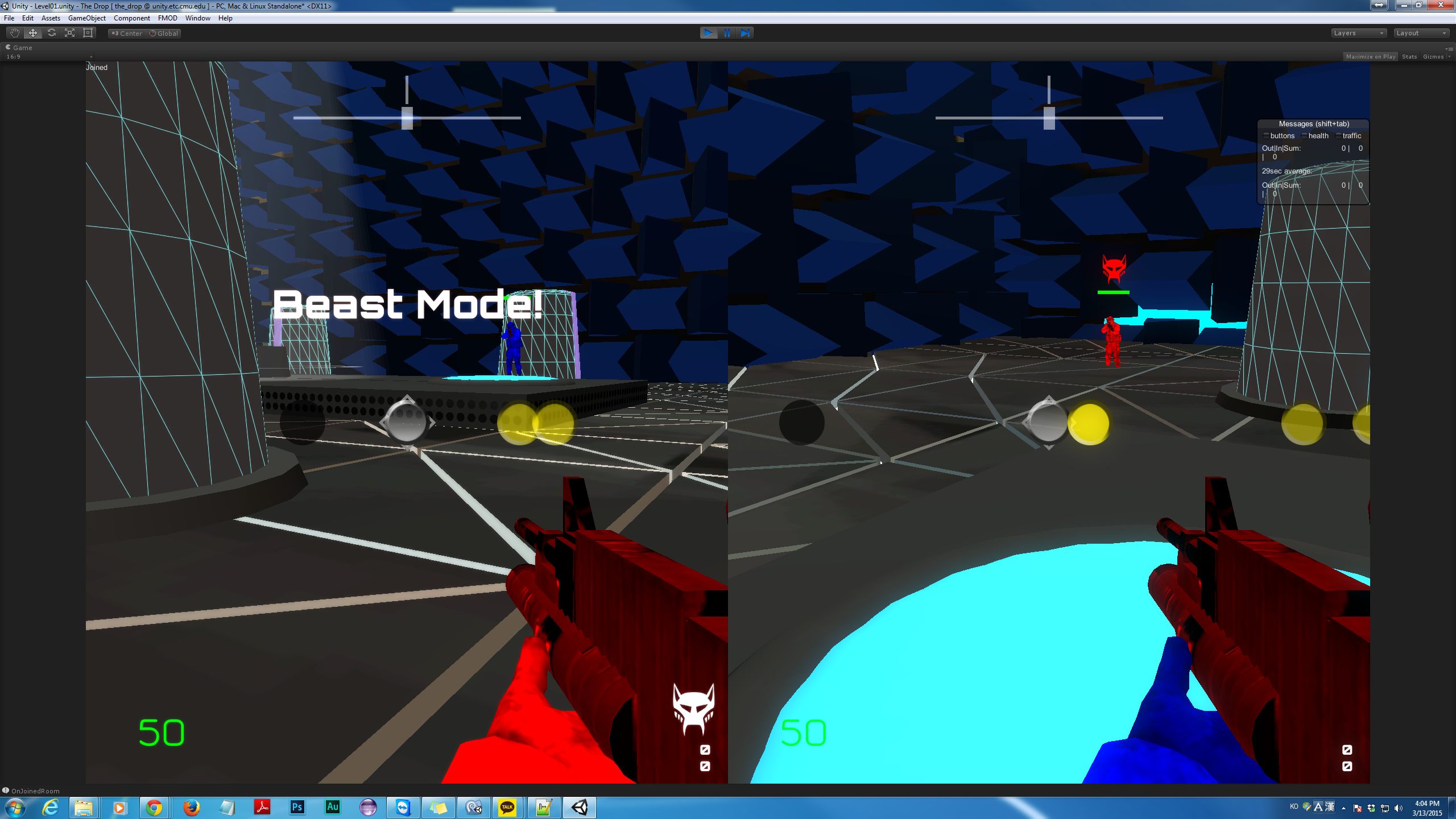
One of the other ways to help with balance and create exciting flippable moments throughout the game is something that we call Beast Mode. Beast Mode, for those that don’t know, most famously refers to the nickname of Marshawn Lynch of the Seattle Seahawks, exemplified by his play against the New Orleans Saints where for one play he was unstoppable. We created an item that can be picked up that will allow you to instantly (it normally moves slowly) push the crossfader to the opposite side.
The placeholder icon above shows that the player has it equipped and can go beastmode on the crossfader the next time he touches it (unless he is neutralized before he gets there.) We have found this to be an incredibly exciting moment that even allows less experienced players get these flippable moments and make the crowd go crazy just like Marshawn did against the Saints. We also added Combo Breaker items where if you pick them up you can break your opponent’s combo, also helping level the playing field for less experienced players.
Asynchronous Beatmap Duets
One last thing to tell you about that we are working on this week is asynchronous beatmaps that create more interesting strategy and gameplay. Because we are only able to use one audio source, at any given time, both players are most likely listening to one of the two songs (unless the crossfader is in the middle.) In order to make it so that you aren’t playing a beatmap that doesn’t correspond to what you are hearing, the beatmaps dynamically change according to which song is winning at any given moment. Originally, this meant that most of the time our opportunities to fire were exactly the same.
Something we found interesting with our experiments using networked play and having two audio sources was often having different firing opportunities, making it so that you had to more carefully think about when you are attacking your opponent and when you were hiding. JD and Mac have been working on a system that allows both players to be hearing the same song, but to be playing different beatmaps for that song. This involves creatively looking at each song to divide the notes, basically resulting in the two players playing the complete song together as a duet.
Those were a few of the biggest things we are working on now. Thanks for tuning in!
The Drop
